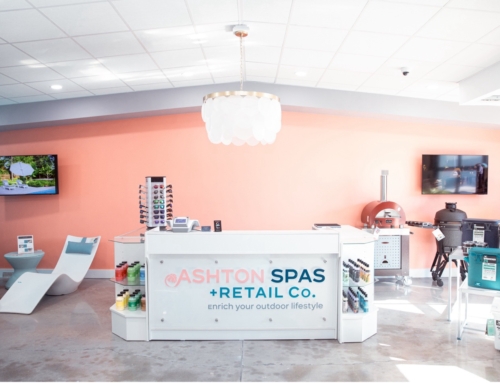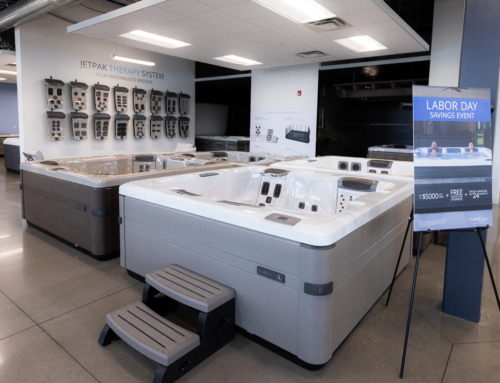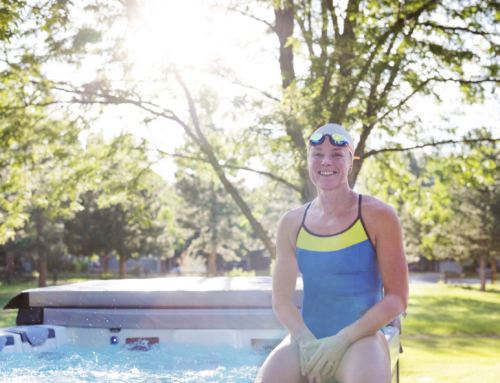 So you know you want to advertise your spa dealership, now what? You’re probably thinking: How many commercials I should buy? What kind of commercials? How many different stations should I advertise on? Which times of day should I advertise? Sometimes these basic unknowns can keep even the most determined retailer out of the game.
So you know you want to advertise your spa dealership, now what? You’re probably thinking: How many commercials I should buy? What kind of commercials? How many different stations should I advertise on? Which times of day should I advertise? Sometimes these basic unknowns can keep even the most determined retailer out of the game.
When taking that step towards media buying, you’ll want to go in armed with info that will help you walk the walk. Especially if you’re serious about getting the most out of your media spend. H2Insider spoke with Bill Kittel of The Barry Marketing Group about his agency experience buying media for spa dealers.
Understanding Media Buying Speak
To converse with media companies, their sales reps, and agency reps, small business professionals should understand the definitions commonly used in media analysis. Of course, you need to identify your target demographic, the age and gender of your target audience…or the people you want to hear your message. Psychographics, specifically home ownership, should also be considered.
Do you want a lot of people to hear your message? Or do you want your message heard a lot?
Once these are identified, you should determine your goal: Do you want a lot of people to hear your message? Or do you want your message heard a lot? This is where the conversation turns to reach versus frequency.
Reach is the total number of people the media reaches during a given timeframe. If you want to talk to a lot of people, you look for the largest audiences. Frequency refers to the number of times the average person will receive your ad. If you want to talk to people a lot, you aim to make multiple impressions on the same audience. Kittel has found that television, the more expensive venture, is typically used to maximize reach for spa retailers while radio offers a focus on frequency. While local TV is becoming a more cost effective medium, in his experience, radio and the frequency approach produce the most cost effective results for hot tub dealers. (More on this below.)
It’s much more important to reach the frequency you want than it is to take a higher rated station with less frequency. - Bill Kittle
Radio is primarily sold in dayparts, or specified time periods in which an ad will run. Here are the common dayparts you’ll see:
- Morning Drive: 6am – 10am
- Mid-Day: 10am – 3pm
- Afternoon Drive: 3pm – 7pm
- Evenings: 7pm – 12am
Rather than percentages, Kittel pays more attention to the actual number of people when making media purchase decisions. The two figures he depends on are AQH and Cume.
Average Quarter Hour Persons (AQH) – the average number of persons listening to a particular station (and daypart) for at least five minutes during a 15-minute period
Cume Persons – the total number of different persons who tune to a radio station during the course of a daypart for at least five minutes
Understanding Media Ratings
Media ratings determine the price paid for broadcast media. Ratings are based on the percentage of the available audience listening to the radio at a given time or watching a given TV show. The data are gathered by statistical analysis companies with electronic metering technology that provides real-time information across various viewing and listening devices.
Kittel reminds us that price is not simply about ratings, but also comes down to supply and demand. How much media space is available and how many businesses are competing to advertise for this space? He notes that, historically, media offers a better buy schedule in the first quarter of the year, when supply is up and demand is low.
Strategy to Media Buying: What Would the Expert Recommend?
When he works with a spa retail client, Kittel’s method follows this simple formula:
- Identify target demographic (usually 35 to 64-year-old homeowners) and daypart
- Specify budget (and stick with that number)
- Determine strategy (based on goal and measurable results such as cost per sale)
Kittel recognizes that the hot tub purchase is typically driven by a “coupled” effect. In other words, two individuals together are involved in making the purchase decision. If you can hit one of the two effectively enough, then that’s enough to start the conversation. So this is where he starts with strategy.
When and in what context are these 35 to 64-year-old homeowners most likely listening in a way that would most likely result in motivating them to talk about what they heard with their partner?
For selling spas, Kittel likes the afternoon drive time best...
According to Kittel, the best daypart for potential spa customers is radio news and sports talk at the end of the business day. These listeners are typically more engaged in active rather than passive listening, so more likely to actually hear a commercial’s message. For selling spas, Kittel likes the afternoon drive time best, when people are on their way home after a hard day of work. By limiting the media buy to one daypart, it’s easier to reach potential customers effectively (i.e., a good frequency level) with a limited budget. This, of course, is when an evening soak in the backyard spa sounds undeniably inviting and is hard to resist imagining.
The getting-home conversation for that listener goes something like this:
He says, “How was your day, Honey?”
She responds, “Long and challenging, as usual… I was just imagining coming home to a glass of wine and an escape into the hot tub we don’t have yet.”
He perks up. “Wow, that does sound good. Hey, we have time this Saturday. Is there somewhere we could go to check hot tub options out?”
“Actually, I just happened to hear there’s a spa sale going on in town…”
Well, maybe not quite as cheesy as that. But you get the idea.
Once you give the media rep your preferred daypart and budget, then the rep produces a media proposal for your consideration. The proposal will list frequency and cost, which you can compare against other stations. This is the point you think about strategy.
Strategy should simply come down to optimizing frequency within the allotted budget.
In Kittel’s opinion, strategy should simply come down to optimizing frequency within the allotted budget. He’s had the best results with an average 2 frequency, meaning each person listening in the targeted demographic will hear the ad twice. When promoting a grand opening or tent sale, he aims for 2.5 in a more localized area; but for brand maintenance (a longer, more consistent schedule), a spa dealership can get away with 1.5 and perhaps a broader reach.
 Kittel emphasizes here that frequency is the primary driver of ad effectiveness for selling hot tubs. He says, “It’s much more important to reach the frequency you want than it is to take a higher rated station with less frequency.” So if you have a higher-rated radio station that offers a 1 frequency in the preferred daypart within your budget and another lower-rated station offering a 2 frequency, you should go with the lower rated station.
Kittel emphasizes here that frequency is the primary driver of ad effectiveness for selling hot tubs. He says, “It’s much more important to reach the frequency you want than it is to take a higher rated station with less frequency.” So if you have a higher-rated radio station that offers a 1 frequency in the preferred daypart within your budget and another lower-rated station offering a 2 frequency, you should go with the lower rated station.
Besides local radio stations, this strategy can also work when purchasing online media time. Kittel has had success with promoting spas on Pandora, Spotify, and iHeartRadio. You identify what your target audience is listening to on their way home from the workday (or even during work) and apply the appropriate frequency.
Should a Dealer Go Through an Agency for Buying Media?
Media buying can be a challenge for a small business owner when trying to negotiate it on his own while operating a business at the same time. That’s why advertising agencies exist.
A seasoned agency has a thorough understanding of media analysis, the local market, and advantages and disadvantages of available media (television, radio, print, billboards, internet and etc.). Ad agencies have established relationships with media companies, so they can secure better rates than small businesses going direct. And since they’re typically paid a standard commission by the media companies rather than charging client fees for their services, ad agencies are a reliable source for unbiased recommendations.
A good agency does not need to be a large, fancy firm. Often smaller (“boutique”) shops can provide a better level of service. The key is to find a firm you’re comfortable with that will take the time to understand your business and your goals.
Not all spa dealership promotional needs are the same. Follow these basic guidelines, though, and you’ll have a head start on your media buying endeavors.









Leave A Comment